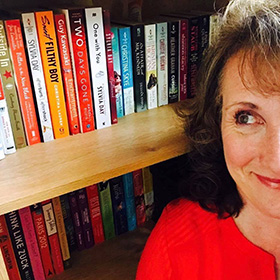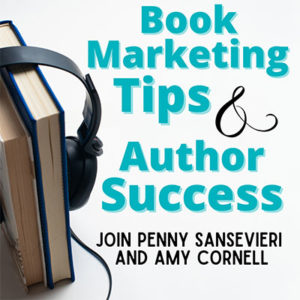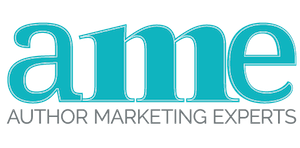Book discovery is about reaching new, potential readers with a smart message.
What it’s not about is simply throwing basic information out there about your book and hoping someone is paying attention.
Luck really doesn’t play as big a role in book discovery as you’d think, because the reality is, most authors just throw things out there.
Book discovery gets much more lucrative when you put some effort into fine tuning your message and narrowing down your targets, and a great way to do that is with smart advertising.
Amazon Ads for Authors
More and more we’re seeing Amazon getting creative with how much they’re adding to their product pages and searches.
Amazon Marketing Services (AMS) “Sponsored Products” and “Product Display” ads are everywhere now so it’s time to get on board with Amazon ads for authors to see if you can increase your book discovery and garner a bigger piece of that pie.
Compared to Facebook ads for authors, or Bookbub ads for authors, they do require quite a bit more TLC, but at the end of the day you’re getting data from the platform where purchases are being made – so you’re closer to the end game.
When you set up your Amazon ads for authors, the AMS site will give you the option to use their automated system or set everything up manually. While setting up ads using an automated system might seem easier, it’s really worth the little bit of effort to do this manually.
For the Amazon ad system to work correctly, you need between 300 and 400 keywords, which may seem daunting but really isn’t as difficult as you may think. Basically what you’re doing is finding keywords that mimic your target market’s search behavior. This means you’re really focusing your efforts and your budget on the people most likely to be interested in your book. Makes sense, right?
I wrote an in-depth piece on this, with videos, that you should check out after you’re finished here.
Again, I like AMS ads because you’re capturing buyer attention at the source, with the fewest number of steps required to close the sale. That’s book marketing gold.
Facebook Ads for Authors
Facebook ads have changed a lot in recent years, and this is a good thing, in my opinion.
To be candid I’ve always kind of hated Facebook ads because when it comes to selling books and funneling buyers to Amazon to buy, I never felt like they got enough traction.
Fortunately a big part of the changes can be attributed to targeting, so there are some guidelines now that make Facebook ads for authors much more straightforward.
And I still encourage you to reserve Facebook ads as a support strategy when you’re running a discount promotion for your book, to really sweeten the deal and push that click through.
To start your book discovery on Facebook, plan to test out at least 5-10 different ads. I know it sounds like a lot but you can copy ad formats and tweak details, which saves some time. But for what that’s worth, creating, testing and analyzing ads is not a quickie strategy. Of all the things you can save time on in book marketing, ads isn’t one of them.
For the text of the ad you need to tap into the emotion of your story, or the unique selling point if you write non-fiction. The potential shopper has to feel super compelled to click on your ad.
For the image, don’t use your cover. Your book is a stranger to them. Instead find stellar images that speak to your genre or topic. People are attracted to people, so keep that in mind, but corny face on shots of people from stock photo companies don’t work as well as they used to, so when using people, don’t be so obvious.
Just like on Amazon, Facebook ads for authors should still target people who like your genre, books and authors that are similar to yours, or even TV shows and movies. And this is where the multiple ads come in, you want to avoid targeting a specific author and then a movie franchise in the same ad – because you won’t know which group was more interested.
Use the Narrow Audience option to target people who like two concepts that are important to your branding, so for my ads I’d target people who list their profession as “author” who are also interested in “marketing” – this would be an absolute requirement. Yes it limits my reach, but I’m more likely to be seen by people who are ready to chat about taking their book to the next level.
My suggestion is to direct people to Amazon. Yes, it can be tempting to send them to your website because you want them to learn more about you – but honestly a good Amazon presence serves the same purpose and you’re not delaying the sale.
Remember, the more steps someone has to take to get to buy something, the more likely they are to lose interest and bail.
When it comes to a budget, I’d start with no more than $50, across all the ads.
Watch which ones seem to be performing the best, getting the most clicks, and consider increasing the budget for those.
For ads that aren’t performing well, considering whether or not you can make updates to the image or the text, give them one more shot before completely axing them.
Why? Because very rarely do we get things right the first time, I still go through a trial and error process with a lot of my own promotion because buyer behavior is always evolving and the market is always evolving, that’s what makes book marketing so dynamic, and why you can’t afford to take a break from it if you’re really serious about being successful.
Bookbub Ads for Authors
Running Bookbub ads for authors is a strategy I’m incorporating more and more into my client programs.
Why? Because it’s surprisingly accessible and easy to get started. So when our work is done it’s a strategy I can hand off with confidence.
Bookbub is also a powerhouse in the digital book market and while it’s ultra competitive to get on their newsletter (keep trying every month anyway), any author with a book on Amazon can utilize their ad platform.
I know a lot of fiction authors that are having challenges with Amazon ads. And whether it’s figuring out the hundreds of keywords, how to read the data, or how to allocate your budget, there are a lot of factors to consider. And in my experience fiction just seems to be less predictable.
Don’t get me wrong, when you can get Amazon ads to work, when your book is a good fit, it can be a really lucrative author marketing strategy. But if you’re running into roadblocks or haven’t even wanted to “go there” yet, don’t give up on ads completely, give Bookbub ads for authors a shot.
Bookbub ads keep book discovery simple by keeping options focused. You can align with your genre, with other authors in your genre, or a combination of the two. This means Bookbub is already helping you narrow down who you’ll be targeting.
As usual I still recommend a pay per click method, but seriously, Bookbub is an excellent place to get your feet wet. I wrote a more in-depth piece that walks you through the steps to get ads started that I encourage you to read.
When Ads Don’t Cut It
Say you’ve run ads, you’ve learned about the best tricks and strategies, but you’re still not seeing any return on your efforts.
When this happens I tell authors it’s time to look for reasons why you’re not making the sale.
Because ads equal traffic, that’s a simple concept, but traffic does not equal sales.
If you’re spending money on ads you’re getting clicks, so you’ve piqued their interest, which is definitely a win. But if they’re getting to your book page and not buying, then there are other things getting in your way.
What Kills the Sale
There are a few key things to look at when traffic isn’t converting to sales on Amazon. Here’s my list of the most obvious issues:
Your cover. If your cover doesn’t look like it belongs with all the books on the bestseller list in your genre, you need a new cover. Book covers sell books. Why? Because we judge books by their cover, that’s not just a cute metaphor. It’s real.
And when it comes to book covers you want to be impactful and memorable, but you don’t want to be unique. It’s a fine line. Because shoppers already have it in their head what books should look like, and if yours falls way outside that scope, they won’t make the psychological connection and they’ll pass you by.
Your description. If your book description isn’t set up like the written version of a book trailer, you’re losing people. There are 4,500+ books published every day, so your description better convince people your book is worth their money and their time. If you write fiction, your first line better have the absolute best hook you can come up with. If you write non-fiction you better have bullet points that prove you’re a better bet than anyone else out there.
Your author bio. Believe it or not, it’s not all about you.
Your author bio is not your resume. If you write non-fiction we want to know what your credentials are, but we don’t need to know the year you graduated and your major. Sell yourself as the expert, not with dry facts, but with emotional appeals. To sell non-fiction you need to establish and build trust.
If you write fiction, you should understand what makes readers in your genre tick. So while it’s cute you have 3 cats, each named for your favorite post-impressionism artists, unless that’s something the majority of your potential fan base can connect with, leave it out. Focus on introducing yourself to readers in a way that aligns you with what they love.
Your price point. If you’re self-published don’t be greedy. Align your pricing with other authors at your level. Top dollar belongs to authors with massive followings and solid track records, while $.99 books can cheapen the value. If you’re traditionally published you may not have full control over this, but you should still be ready to argue for the best options possible for your market. If your pricing is way off from what you see on the bestseller list, you’ve got problems.
The Takeaway
Ads can be a fantastic way to push your book discovery, but in this day and age they need to be super smart and super focused.
With a little time and attention you can really expand on your target buyer reach with ads on platforms like Amazon, Bookbub and Facebook.
And whether or not you’re having issues with ads, I urge you to download my free reader profile worksheet to really help you fine tune your message and approach to match your buyer market!
What has your experience with ads been like and how has it affected your book discovery?





0 Comments
Trackbacks/Pingbacks